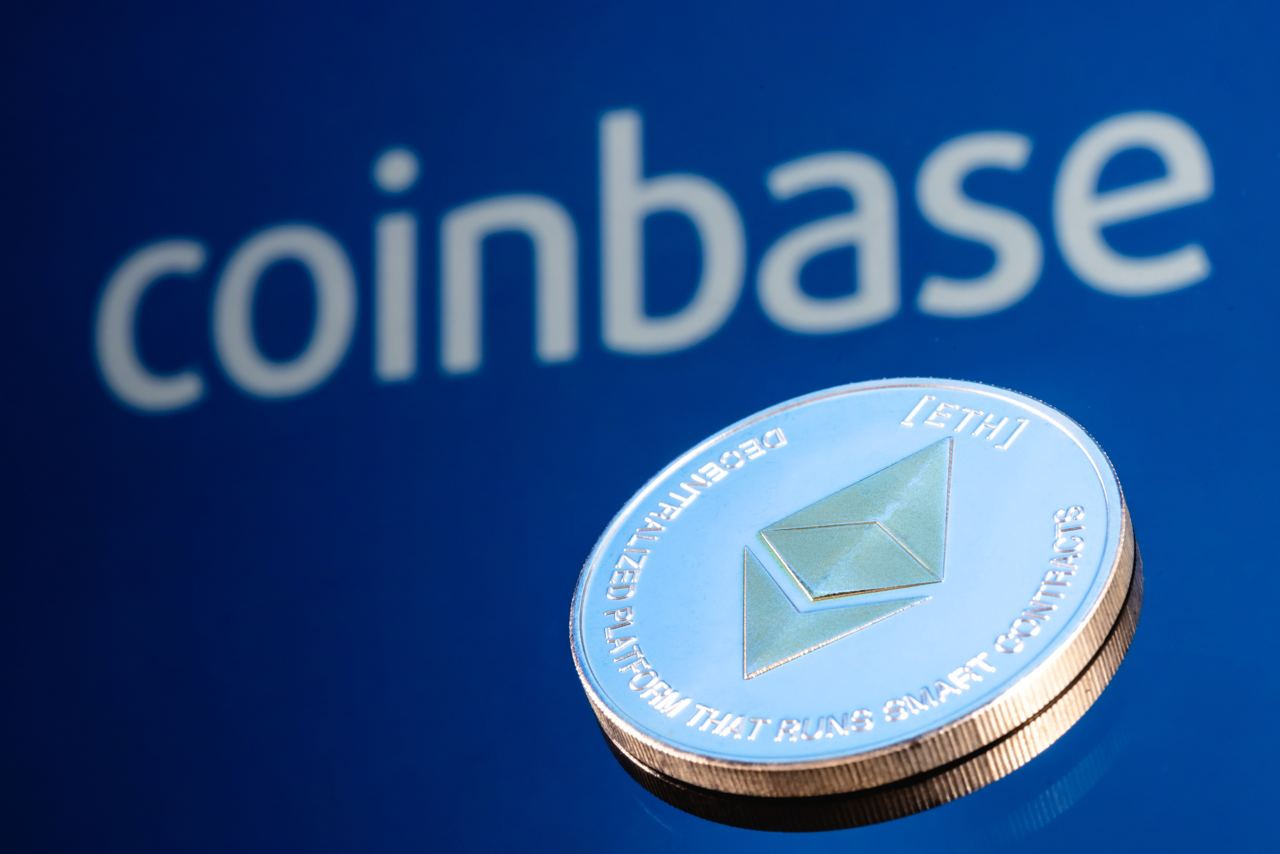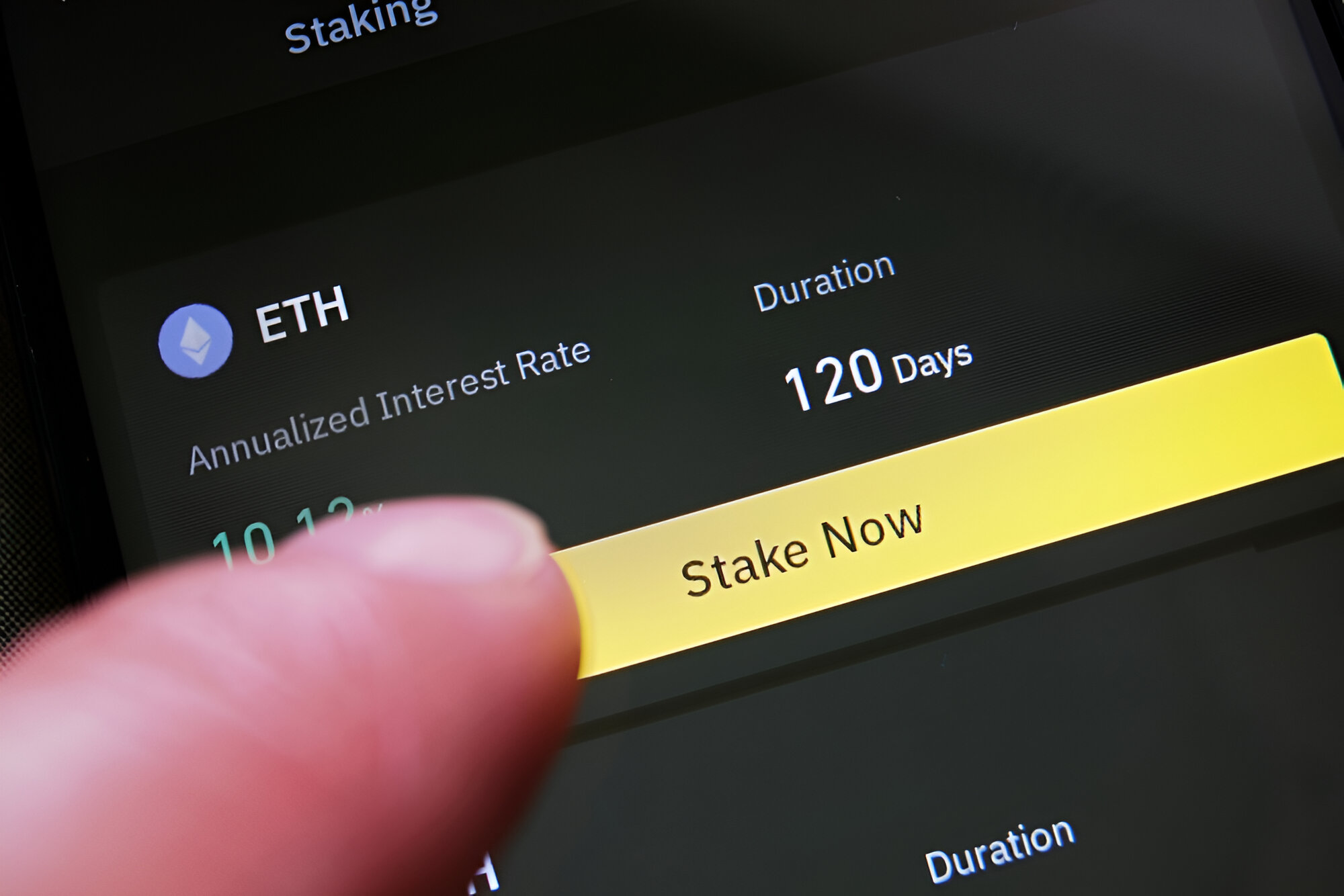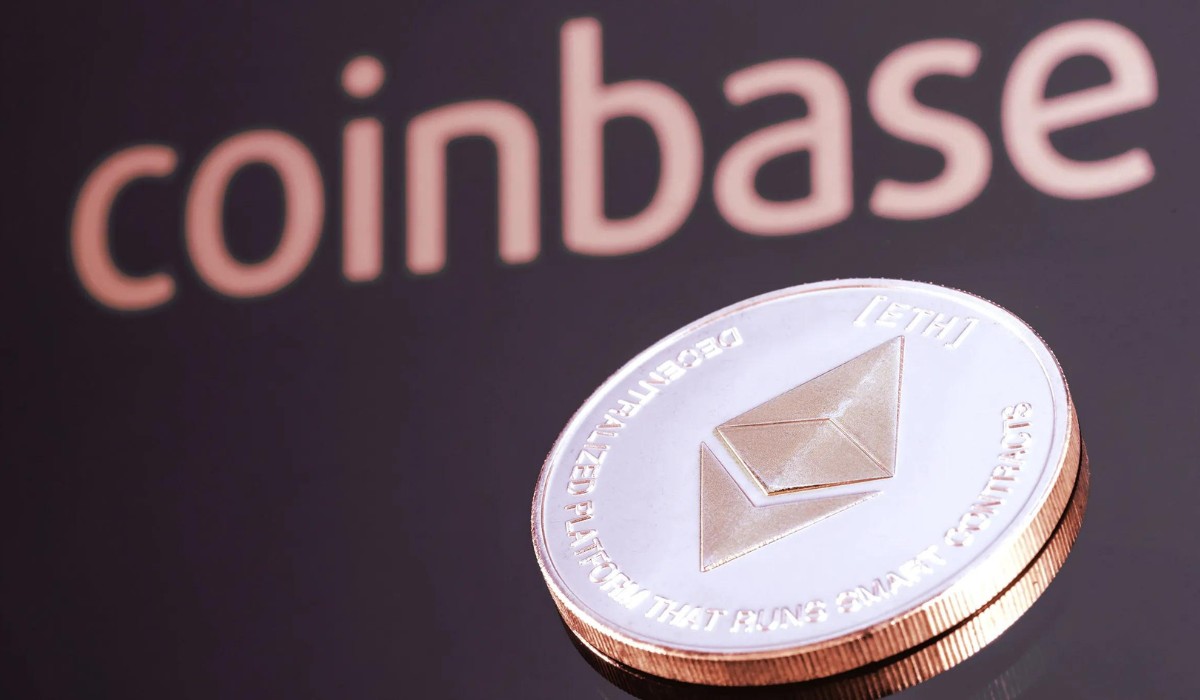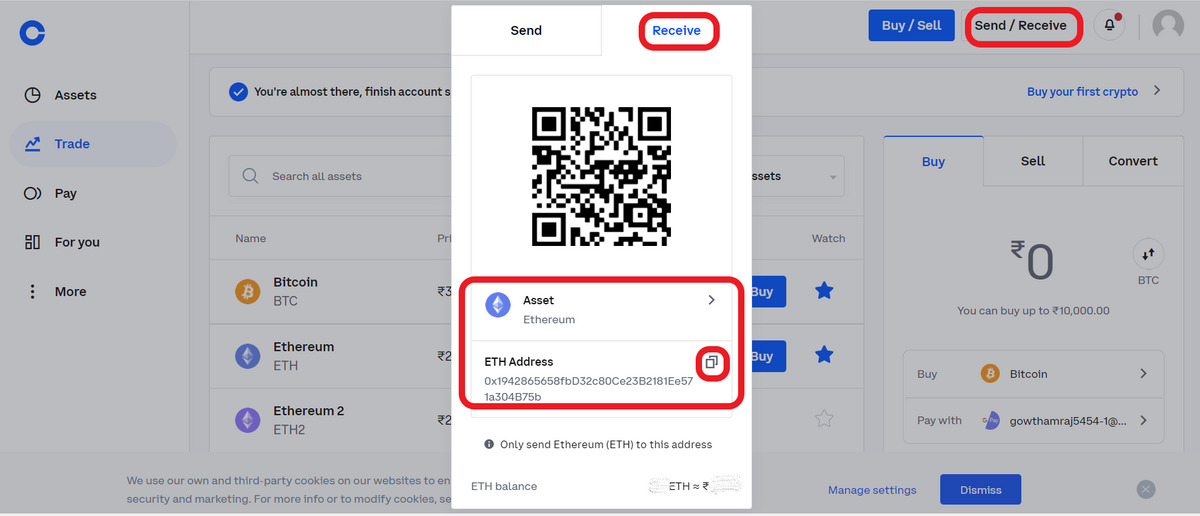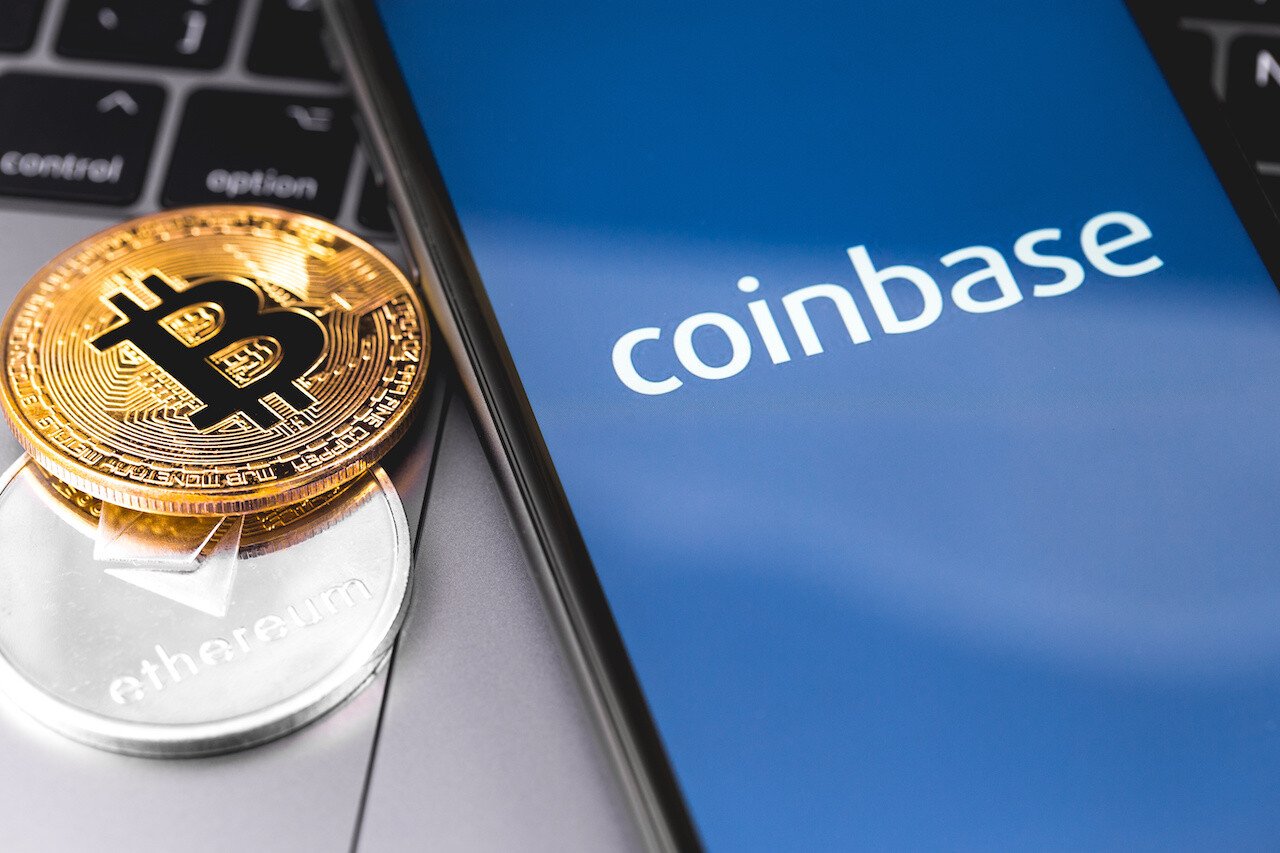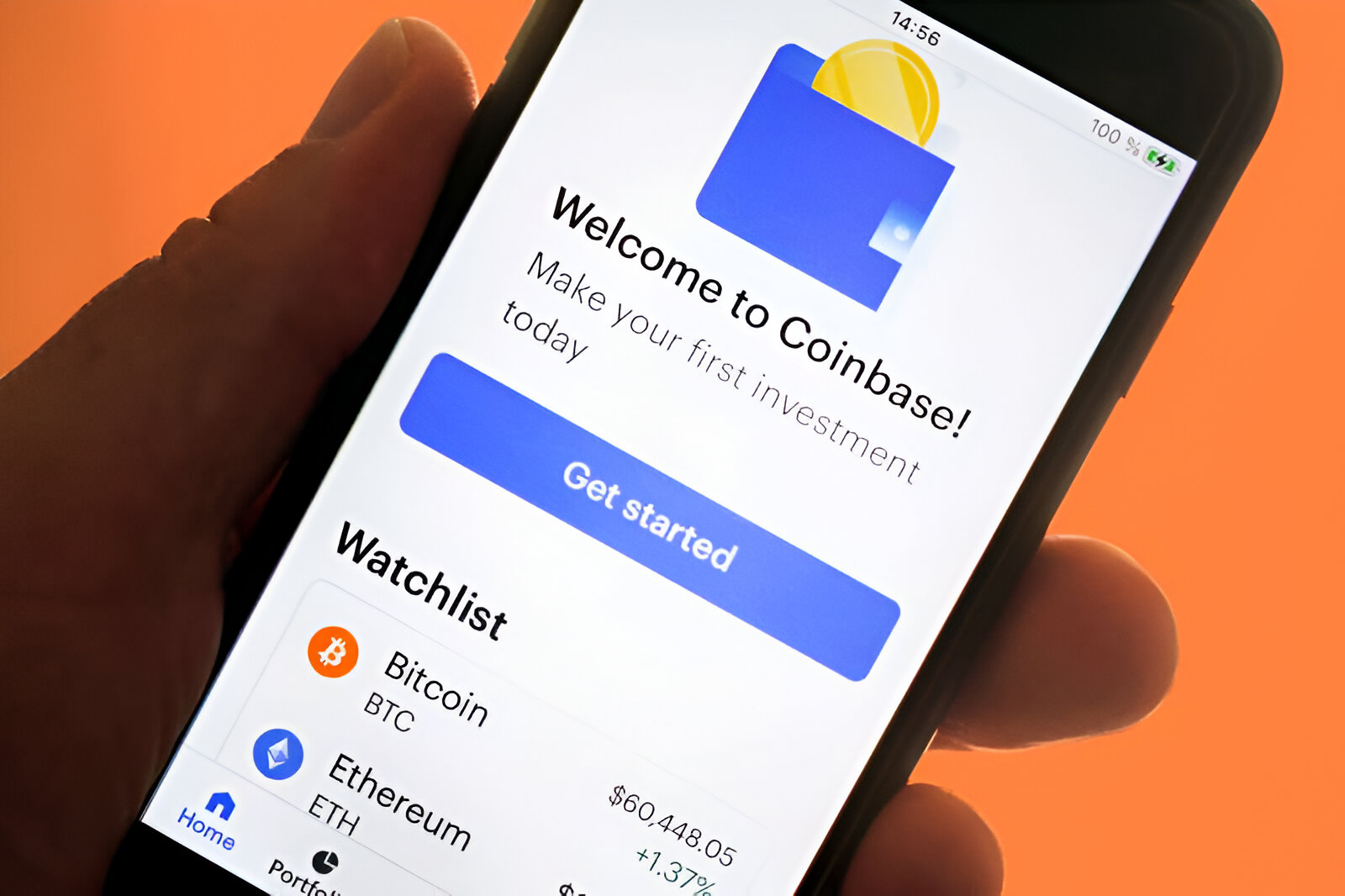Introduction
Welcome to the world of Ethereum staking on Coinbase! If you’re an Ethereum enthusiast, you might have heard about the exciting opportunity to stake your Ethereum and earn rewards. Staking has become increasingly popular as a way to participate in the Ethereum network and potentially generate passive income.
But what exactly is staking, and how can you unstake your Ethereum once it’s been staked on Coinbase? In this article, we’ll explore the process of staking and explain when and how you can unstake your Ethereum on Coinbase.
Staking is a process that involves locking up your cryptocurrency, in this case, Ethereum, to support the operations of a blockchain network. By staking your Ethereum, you’re essentially contributing to the network’s security, performance, and decentralization. In return for your participation, you can earn rewards in the form of additional Ethereum.
However, staking your Ethereum comes with a commitment. When you stake your Ethereum on Coinbase, you’re entering a predetermined staking period during which your tokens cannot be easily accessed or transferred. This period is important to ensure the security and stability of the Ethereum network.
Now, you might be wondering, how long do you need to wait before you can unstake your Ethereum on Coinbase? The duration of the staking period can vary depending on several factors, including the specific staking protocol implemented by Coinbase and the current network conditions.
Throughout this article, we will explore the factors that can affect the unstaking process, the benefits of staking Ethereum on Coinbase, as well as the risks and considerations to keep in mind when deciding to unstake your Ethereum. Additionally, we’ll guide you on how to successfully unstake your Ethereum from the Coinbase platform once you’re ready.
Whether you’re a seasoned Ethereum holder looking to explore new opportunities or a newcomer intrigued by the world of crypto staking, understanding the ins and outs of the staking and unstaking process is crucial. So, let’s dive in and uncover the art of unstaking Ethereum on Coinbase!
What is staking and unstaking Ethereum on Coinbase?
Staking Ethereum on Coinbase involves the process of locking up your Ethereum tokens to support the network’s operations. When you stake your Ethereum, you’re essentially contributing to the security, scalability, and decentralization of the Ethereum network. This helps make the network more robust and efficient.
When you stake Ethereum on Coinbase, your tokens are added to a pool of funds that are used to validate transactions and create new blocks on the blockchain. This process is known as Proof of Stake (PoS), where validators are chosen based on the amount of cryptocurrency they have staked. The more Ethereum you stake, the higher the chances of being selected to validate transactions and earn rewards.
By participating in staking, you can earn rewards in the form of additional Ethereum. The rewards are distributed based on a variety of factors, including the amount of Ethereum you have staked and the duration of your staking period. These rewards can provide you with a passive income stream and allow you to grow your Ethereum holdings over time.
Unstaking Ethereum, on the other hand, is the process of unlocking your staked Ethereum tokens and making them available for withdrawal or transfer. When you unstake your Ethereum, you can regain control over your tokens and use them as you wish.
However, it’s important to note that the unstaking process is not immediate. When you stake your Ethereum on Coinbase, you commit to a specific staking period during which your tokens are locked and cannot be easily accessed. This is in place to ensure the security and stability of the Ethereum network.
The duration of the staking period can vary depending on several factors, including the specific staking protocol implemented by Coinbase and the current network conditions. It’s crucial to understand and carefully consider the duration of the staking period before deciding to stake your Ethereum on Coinbase.
Once the staking period is over, you’ll be able to initiate the unstaking process on Coinbase and start withdrawing your Ethereum. The length of the unstaking process can also vary depending on factors such as network congestion and the specific protocols used by Coinbase.
In the next sections, we’ll delve deeper into the staking period, factors that can affect the unstaking process, as well as the benefits and risks of staking Ethereum on Coinbase.
Understanding the staking period
When you stake your Ethereum on Coinbase, you enter into a predetermined staking period. This period represents the duration during which your Ethereum tokens are locked and cannot be easily accessed or transferred. The length of the staking period can vary depending on the staking protocol implemented by Coinbase and other factors.
The purpose of the staking period is to ensure the security and stability of the Ethereum network. By locking up your Ethereum tokens for a specific period, you provide a guarantee to the network that you won’t withdraw your tokens or engage in any malicious activities during that time.
During the staking period, your Ethereum is used as collateral to support the network’s operations. This collateralization helps maintain the integrity of the network and prevents double-spending or other fraudulent activities. In essence, by staking your Ethereum, you contribute to the consensus mechanism of the Proof of Stake (PoS) algorithm and help secure the network.
It’s important to understand that once you initiate the staking process and enter the staking period, your Ethereum tokens are no longer readily available for use. They are “locked” within the staking mechanism and cannot be freely traded or transferred.
The length of the staking period can vary depending on several factors, including the specific staking protocol implemented by Coinbase, the amount of Ethereum you have staked, and the current network conditions. In some cases, the staking period may last for a few days, while in other cases, it may extend to several months or more.
It’s crucial to carefully consider the duration of the staking period before staking your Ethereum on Coinbase. While staking offers the potential to earn rewards, it also requires a commitment to lock up your tokens for a specific period. Therefore, it’s essential to evaluate your personal circumstances, financial goals, and risk tolerance before engaging in the staking process.
Once the staking period expires, you will have the opportunity to unstake your Ethereum and regain control over your tokens. The process of unstaking, as we’ll explore in later sections, allows you to withdraw your staked Ethereum and use it for other purposes, such as trading, selling, or transferring to another wallet or exchange.
Now that we have a better understanding of the staking period let’s move on to discuss the factors that can influence the unstaking process.
How long do I need to wait to unstake Ethereum on Coinbase?
The duration of the staking period on Coinbase can vary depending on various factors, including the specific staking protocol implemented and the network conditions. It’s essential to understand the waiting period before you can unstake your Ethereum on Coinbase.
Typically, the waiting period for unstaking Ethereum on Coinbase can range from a few days to several weeks or even months. The length of the waiting period is determined by the staking protocol and the specific blockchain network on which Ethereum is being staked.
During the waiting period, your staked Ethereum remains locked and cannot be withdrawn or transferred. This waiting period is in place to ensure the stability and security of the Ethereum network. By adhering to this waiting period, users contribute to the consensus mechanism and help maintain the overall integrity of the network.
The exact duration of the waiting period can vary depending on several factors, including the network congestion and the specific staking protocol implemented by Coinbase. During times of high network activity, the waiting period may be longer due to increased demand for transactions and slower block validation times.
It’s important to note that the waiting period for unstaking only begins once you initiate the unstaking process on Coinbase. Therefore, it’s crucial to plan ahead and consider the waiting period when you decide to unstake your Ethereum.
After the waiting period, you will be able to initiate the unstaking process and retrieve your staked Ethereum. The time it takes to complete the unstaking process can also vary depending on network conditions, but generally, it should be relatively quick once the waiting period is over.
It’s important to stay informed about the specific details regarding the waiting period for unstaking Ethereum on Coinbase. Keep an eye on Coinbase’s official announcements, blog posts, or support documentation to ensure you have the most up-to-date information.
Remember, the waiting period is an essential part of the staking process, and it’s crucial to consider it when making decisions about staking and unstaking your Ethereum on Coinbase. Understanding the waiting period will help you plan and manage your Ethereum holdings effectively.
In the next section, we’ll discuss the factors that can influence the unstaking process on Coinbase.
Factors that can affect the unstaking process
Several factors can impact the unstaking process when you decide to retrieve your staked Ethereum on Coinbase. These factors can influence the time it takes to complete the unstaking process and receive your Ethereum tokens. It’s important to consider these factors to manage your expectations and plan accordingly.
Network Congestion: The overall activity on the Ethereum network can affect the speed of the unstaking process. During periods of high network congestion, such as times of increased trading activity or network congestion due to popular applications, the unstaking process may experience delays. It’s important to be aware that during these times, the unstaking process could take longer than usual.
Staking Protocol: The specific staking protocol employed by Coinbase can also influence the unstaking process. Different staking protocols may have different mechanisms and rules for unlocking and unstaking Ethereum. It’s important to familiarize yourself with the specific staking protocol utilized on the Coinbase platform to understand the process and any potential limitations or requirements.
Amount of Staked Ethereum: The amount of Ethereum you have staked on Coinbase can impact the unstaking process. If you have staked a significant amount of Ethereum, it may take longer to process the unstaking request compared to smaller amounts. This is typically due to the need for additional verification and security measures for larger staked amounts.
Timing and Market Conditions: Unstaking Ethereum can be affected by market conditions and timing. If you decide to unstake your Ethereum during periods of high volatility or market events, it’s possible that the process may take longer due to increased trading volume and market activity. It’s important to consider the current market environment and choose an optimal time to unstake your Ethereum.
Blockchain Network Updates: Occasionally, the underlying blockchain network on which Ethereum is staked may undergo updates or network upgrades. During these periods, the unstaking process may be temporarily paused, delayed, or subject to additional verification steps. It’s crucial to stay informed about any network updates or announcements to avoid any potential disruption to the unstaking process.
It’s essential to keep these factors in mind and stay updated on Coinbase’s announcements and support documentation regarding the unstaking process. By understanding and considering these factors, you can set realistic expectations for the time it may take to complete the unstaking process and retrieve your staked Ethereum.
Now that we’ve explored the factors that can affect the unstaking process, let’s move on to discussing the benefits of staking Ethereum on Coinbase.
Benefits of staking Ethereum on Coinbase
Staking Ethereum on Coinbase comes with several enticing benefits, making it an attractive option for Ethereum holders. Let’s explore some of the key advantages of staking your Ethereum on the Coinbase platform.
1. Earning Passive Income: One of the primary benefits of staking Ethereum on Coinbase is the opportunity to earn passive income. By staking your Ethereum, you can participate in the network’s operations and receive rewards in the form of additional Ethereum. These rewards are typically distributed based on the amount of Ethereum you have staked and the duration of your staking period. It provides a way to grow your Ethereum holdings over time without actively trading or investing in additional assets.
2. Support the Network: Staking Ethereum on Coinbase enables you to actively contribute to the security, scalability, and decentralization of the Ethereum network. By locking up your Ethereum and participating in the network’s consensus mechanism, you help maintain the integrity of the blockchain. This support strengthens the network, making it more resilient and efficient for all participants.
3. Potential for Capital Appreciation: In addition to earning rewards through the staking process, staked Ethereum also has the potential for capital appreciation. As Ethereum’s value and demand continue to grow, the value of your staked Ethereum may also increase. This double benefit of earning rewards while potentially benefiting from Ethereum’s price appreciation can be highly lucrative for long-term Ethereum holders.
4. Lower Barrier to Entry: Staking Ethereum on Coinbase provides an accessible way for individuals to participate in the Ethereum network and earn rewards. Traditional methods of earning passive income, such as mining or running a validator node, can require significant technical expertise and infrastructure. Staking on the Coinbase platform reduces the barriers to entry, allowing a broader range of participants to get involved in staking Ethereum.
5. Convenience and Security: Coinbase is a reputable and trusted cryptocurrency exchange, known for its robust security measures and user-friendly interface. By staking Ethereum on Coinbase, you benefit from the platform’s convenience and security features. You can easily manage your staked Ethereum and monitor your rewards through Coinbase’s intuitive user interface. Additionally, Coinbase’s security measures help protect your assets, reducing the risk of unauthorized access or loss.
It’s important to note that the benefits of staking Ethereum on Coinbase are subject to the specific terms and conditions set by the platform. It’s advisable to thoroughly research and understand Coinbase’s staking policies before engaging in the staking process.
Now that we’ve explored the benefits of staking Ethereum, let’s proceed to discuss the risks and considerations when unstaking Ethereum on Coinbase.
Risks and considerations when unstaking Ethereum on Coinbase
While staking Ethereum on Coinbase offers numerous benefits, it’s essential to be aware of the risks and considerations associated with the unstaking process. Understanding these factors will help you make informed decisions and mitigate any potential challenges. Let’s explore some of the risks and considerations when unstaking Ethereum on Coinbase.
1. Lock-up Period: When you stake Ethereum on Coinbase, you commit to a predetermined lock-up period during which your tokens cannot be easily accessed or transferred. This lock-up period restricts your ability to liquidate your Ethereum holdings during market fluctuations or to respond quickly to changing market conditions. It’s important to consider your anticipated liquidity needs and investment goals before staking and account for the lock-up period accordingly.
2. Market Volatility: The cryptocurrency market is highly volatile, and Ethereum is no exception. When unstaking your Ethereum, it’s crucial to be mindful of market conditions and potential price fluctuations. The value of Ethereum can change rapidly, and as such, the value of your unstaked Ethereum at the time of withdrawal may be different from when you initially staked it. It’s important to evaluate your risk tolerance and be prepared for potential market volatility during the unstaking process.
3. Network Delays and Congestion: The unstaking process on Coinbase can be subject to network delays and congestion. During periods of high network activity, it may take longer for the unstaking transaction to be processed and for your Ethereum to become available for withdrawal. Network congestion can also impact transaction fees, potentially increasing the cost of unstaking your Ethereum. It’s advisable to monitor network conditions and plan accordingly when initiating the unstaking process.
4. Platform Risks: While Coinbase is a reputable and trusted cryptocurrency exchange, it’s crucial to consider the potential risks associated with using a centralized platform. The security and custody of your staked Ethereum are dependent on Coinbase’s practices. It’s advisable to understand Coinbase’s security measures, insurance policies, and track record before staking your Ethereum. Additionally, it’s essential to keep your account secure by implementing strong authentication and following best practices for safeguarding your login credentials.
5. Regulatory Changes: The regulatory landscape surrounding cryptocurrencies, including staking and unstaking processes, is continuously evolving. Changes in regulations or legal frameworks can introduce new requirements or restrictions that may impact the unstaking process. It’s important to stay informed about any regulatory developments in your jurisdiction and ensure compliance with applicable laws when unstaking your Ethereum on Coinbase.
By considering these risks and factors, you can approach the unstaking process on Coinbase with a clear understanding of the potential challenges and make informed decisions accordingly.
Now that we’ve discussed the risks and considerations, let’s move on to explore the process of unstaking Ethereum on Coinbase.
How to unstake Ethereum on Coinbase
When you’ve decided to unstake your Ethereum on Coinbase and retrieve your staked tokens, there are specific steps you need to follow. Here’s a general overview of the process:
1. Log in to your Coinbase account: Visit the Coinbase website or open the Coinbase app and log in to your account using your credentials.
2. Navigate to the staking section: Once you’re logged in, locate the staking section on the Coinbase platform. This can typically be found under the “Earn” or “Staking” tab.
3. Select the Ethereum stake you want to unstake: In the staking section, you’ll see the Ethereum stake(s) you have on Coinbase. Choose the specific stake that you want to unstake.
4. Initiate the unstaking process: Once you’ve selected the stake you want to unstake, you’ll find an option to initiate the unstaking process. Click on the appropriate button or link to start the process.
5. Confirm the unstaking request: After initiating the unstaking process, Coinbase will likely require you to verify your decision. Review the details of the unstaking request and confirm your intention to unstake your Ethereum.
6. Wait for the unstaking period to conclude: Once the request is confirmed, you will need to wait until the unstaking period comes to an end. This waiting period can vary depending on the specific terms and conditions set by Coinbase.
7. Check your wallet balance: After the waiting period is over, your unstaked Ethereum tokens should become available in your Coinbase wallet. Check your wallet balance to ensure that the unstaking process has been successfully completed and that your Ethereum has been returned.
Note: The process of unstaking Ethereum on Coinbase may vary slightly depending on the specific user interface and updates made by Coinbase. It’s essential to review Coinbase’s official guidelines or support documentation for the most up-to-date and accurate instructions.
Remember, before initiating the unstaking process, it’s critical to consider the potential risks, market conditions, and your own financial objectives. Understanding these factors will help you make sound decisions and manage your Ethereum holdings effectively.
Now that we’ve covered the process of unstaking Ethereum on Coinbase, let’s proceed to the concluding section.
Conclusion
Staking Ethereum on Coinbase provides a unique opportunity to contribute to the Ethereum network while potentially earning passive income. However, it’s essential to understand the staking period, the waiting time for unstaking, and the factors that can affect the unstaking process.
During the staking period, you lock up your Ethereum tokens to support the network’s operations, ensuring security and stability. The waiting period for unstaking can vary, influenced by network conditions, staking protocols, and other factors.
Factors such as network congestion, the staking protocol, and the amount of staked Ethereum can affect the unstaking process. It’s also important to consider market volatility and potential risks associated with using a centralized platform like Coinbase.
To unstake Ethereum on Coinbase, you need to initiate the unstaking process, wait for the unstaking period to conclude, and check your wallet balance to confirm the return of your unstaked Ethereum.
By weighing the benefits, risks, and considerations, you can make informed decisions about staking and unstaking Ethereum on Coinbase, aligning with your financial goals and risk tolerance.
Remember to stay updated on Coinbase’s official announcements and support documentation for the most accurate and current information regarding the staking and unstaking processes.
Staking and unstaking Ethereum on Coinbase can be an exciting and rewarding experience, providing a way to actively participate in the Ethereum network’s growth. As with any financial decision, it’s crucial to conduct thorough research, assess your personal circumstances, and make decisions that align with your long-term objectives.
We hope this guide has provided you with valuable insights into the world of staking and unstaking Ethereum on Coinbase. Happy staking and unstaking!







